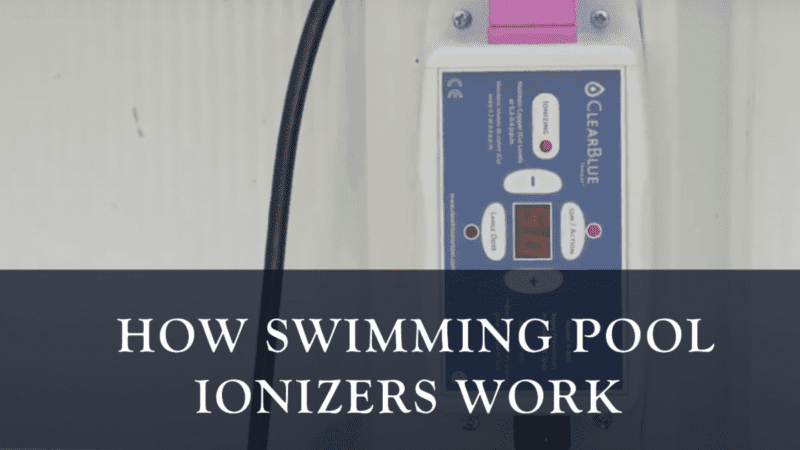How Swimming Pool Ionizers Work, the Cost and the Pros, and Cons

There’s more to cleaning and maintaining your swimming pool than just keeping leaves and twigs out. Invisible parasites and pathogens can also make your pool unsafe for you and your family. And that’s where the Clearblue swimming pool ionizer comes in.
Here’s everything you need to know about leveraging Clearblue ionizer for smoother and silkier pool water.
How It Works
A Clearblue system features a PVC tee, a controller, and an electrode (set of mineral plates). It’s wise to place the PVC tee as close to your pool water or filter as possible. The electrode is connected to the controller and threaded into the tee.
The controller charges the electrode with a specific electrical current. As the current jumps between the plates through the water, it releases microscopic mineral particles. Owing to this process, the electricity ionizes these particles, thus converting them into mineral ions.
Now here’s where the “killing” takes place. The positively charged ions are attracted to the negatively charged algae and bacteria cells and terminate them by altering their molecular structure. The filter then collects the dead cells, which combine into chunks.
Clearblue swimming pool ionizer uses the following minerals to maintain your pool:
- Copper: This is the active ingredient in many algaecides. Besides keeping your pool water blue and clear, the Clearblue pool ionizer system uses copper to control algae
- Silver: Silver helps to eliminate harmful bacteria
- Zinc: Zinc prevents your swimming pool from staining, so it remains blue and scenic for a long time
As you may already know, most homeowners use chlorine to keep their pool water clean. But pool ionizers present a different way to help maintain your pool by using fewer chemicals.
Tip! Another effective way of reducing chemical consumption is by properly cleaning your pool at least once a week.
How Much Does a Swimming Pool Ionizer Cost?
A swimming pool ionizer might cost you approximately $700 to $1,500. Plus, you’ll need to replace the cell every 6-12 months of use and can cost up to $200.
Generally, when you compare pool ionizer’s long-term maintenance expenses and upfront cost, it’s much lower than ozone generators and UV systems.
Note that if you opt for this pool maintenance approach, you’ll want to factor in the expenses of having a professional install it.
Pros and Cons of Pool Ionizers
Admittedly, nobody wants a swimming pool full of chemicals. Thankfully, there are countless supplemental sanitizers on the market, and the Clearblue swimming pool ionizer offers one of the best values. But it’s not foolproof, so you need to be aware of its pros and cons.
Pros
- Provides cost savings.
- Protects skin health.
- Sunlight resistant.
- Quick and easy maintenance.
- Keeps algae at bay.
- Effective at eliminating pathogens from pool water.
Cons
- Can stain your pool.
- You’ll still need a sanitizer and an oxidizer.
- Slow process.
Have a Cleaner, More Enjoyable Pool with Clearblue
Using a swimming pool ionizer is an excellent way of preventing future problems with your pool. Besides, it’s one of the most affordable ways to make sure that your pool is sparkling and safe for use.
When it comes to pool maintenance and sanitation, look no further than R&R Pools. With over 35 years of working experience, you can count on us for all your swimming pool needs. Contact us today at info@rrpools.ca, or check out our website at https://www.rrpools.ca/ to learn more about our comprehensive pool services.
